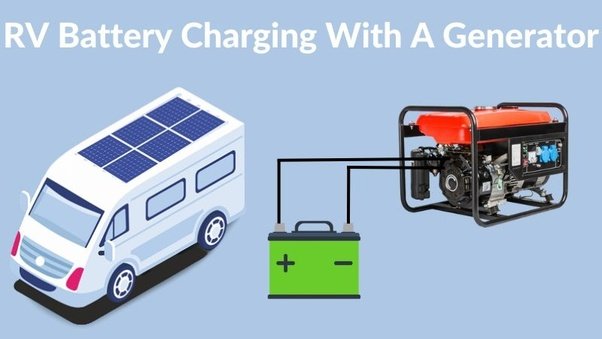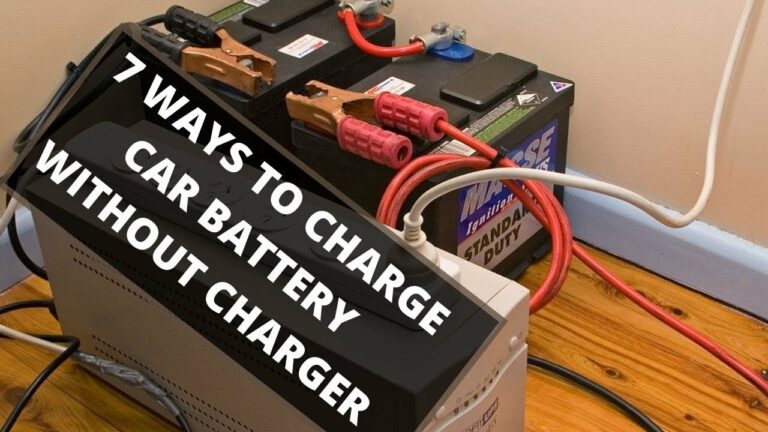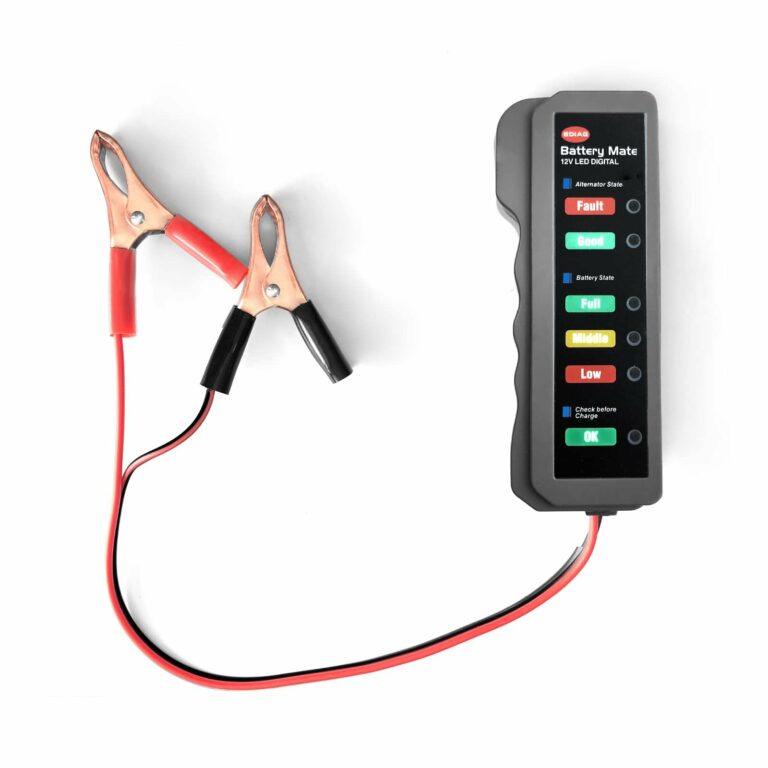Efficiently Charge A Car Battery With A Generator
Looking to charge your car battery but don’t have access to a traditional power source? No worries! In this article, we’ll show you how to charge a car battery using a generator. It’s easier than you might think. Whether you’re on a camping trip or experiencing a power outage, a generator can come to the rescue and get your car battery up and running again. So, let’s dive right in and learn how to charge a car battery using a generator!
How to Charge a Car Battery Using a Generator?
Charging a car battery using a generator can be a convenient and reliable solution, especially in situations where access to electrical outlets is limited or unavailable. Whether you are on a camping trip, experiencing a power outage, or simply need to recharge your car battery on the go, a generator can come in handy. In this article, we will guide you through the process of effectively and safely charging your car battery using a generator.
Section 1: Understanding the Basics
Before we dive into the actual process, let’s take a moment to understand the basics of how a generator works and its compatibility with car batteries.
1.1 How does a generator work?
A generator is a device that converts mechanical energy into electrical energy. It accomplishes this by using a fuel-powered engine to rotate a magnet within a coil of wire, generating an electrical current. This current is then transferred to the appropriate outlets for use.
1.2 Generator compatibility with car batteries
Most generators produce alternating current (AC), while car batteries operate on direct current (DC). To charge a car battery using a generator, you will need a charging system capable of converting the AC output from the generator to the DC power required by the battery. This is typically achieved using a battery charger specifically designed for automotive batteries.
Section 2: Gathering the Necessary Tools and Equipment
To successfully charge your car battery with a generator, you will need to gather the necessary tools and equipment. Here’s a list of items you will typically need:
2.1 Generator
Ensure you have a generator capable of delivering the required power output for your battery charger. Check the generator’s specifications to determine its maximum and continuous power output.
2.2 Battery Charger
Select a battery charger that is compatible with your car battery. Consider factors such as voltage, battery type (e.g., lead-acid, AGM, lithium-ion), and charging capacity.
2.3 Jumper Cables or Battery Clamps
You will need jumper cables or battery clamps to connect the battery charger to the car battery. Make sure they are in good condition and capable of handling the required amperage.
2.4 Fuel
Ensure you have enough fuel to run the generator for the required charging duration. Refer to the generator’s fuel consumption rate to estimate the amount of fuel needed.
2.5 Safety Precautions
Don’t forget to gather essential safety equipment such as gloves, safety glasses, and a fire extinguisher. Safety should always be a priority when working with generators and batteries.
Section 3: Step-by-Step Guide to Charging a Car Battery Using a Generator
Now that you have the necessary tools and equipment, let’s go through the step-by-step process of charging a car battery using a generator.
3.1 Step 1: Prepare the Generator
Position the generator in a well-ventilated area, away from flammable materials. Check the fuel level and oil level (if applicable) to ensure they are sufficient. Follow the manufacturer’s instructions for starting and running the generator.
3.2 Step 2: Connect the Battery Charger
Ensure both the generator and battery charger are turned off before making any connections. Connect the positive (red) clamp or cable from the battery charger to the positive terminal of your car battery. Then, connect the negative (black) clamp or cable to the negative terminal of the battery.
3.3 Step 3: Set the Charging Parameters
Depending on your battery charger model, you may need to set the charging parameters such as voltage and charging mode. Refer to the charger’s user manual for specific instructions on configuring the settings for your car battery.
3.4 Step 4: Start the Generator
Once the battery charger is properly connected and the charging parameters are set, start the generator following the manufacturer’s instructions. The generator will begin producing electrical power, which will be supplied to the battery charger.
3.5 Step 5: Monitor the Charging Process
Keep an eye on the battery charger’s display or indicator lights to monitor the charging process. Some chargers provide real-time information on charging status, battery voltage, and current flow. Be patient, as the charging process can take several hours, depending on the battery’s state of charge and capacity.
3.6 Step 6: Disconnect and Safely Store the Equipment
Once the battery is fully charged or the battery charger indicates the charging process is complete, turn off the generator and disconnect the battery charger from the car battery. Store the equipment safely, ensuring cables are tidy and protected from damage.
Section 4: Tips and Best Practices
To ensure a successful and safe charging experience, consider the following tips and best practices:
4.1 Understand Your Battery
Familiarize yourself with your car battery’s specifications and charging requirements. Different battery types may have specific charging procedures or limitations that you need to be aware of.
4.2 Choose the Right Battery Charger
Select a battery charger that matches your battery’s specifications and capacity. An incompatible charger may deliver excessive voltage or current, potentially damaging the battery or posing safety risks.
4.3 Follow Safety Precautions
Always prioritize safety when working with generators and batteries. Follow the manufacturer’s instructions, wear proper protective gear, and keep flammable materials away from the generator. If you’re unsure of any safety aspect, consult a professional.
4.4 Regular Maintenance
Perform regular maintenance on both your generator and car battery. Clean the battery terminals, check the electrolyte level (if applicable), and ensure the generator is in proper working condition.
Section 5: Conclusion
Charging a car battery using a generator can provide a reliable solution in various circumstances. By understanding the basics, gathering the necessary tools, and following the step-by-step process, you can safely and effectively charge your car battery on the go. Remember to prioritize safety and adhere to the recommended best practices to ensure optimal results.
Please note that this article is a general guide, and it’s important to consult your car and generator manufacturer’s instructions for any specific requirements or limitations.
How to charge a 12 volt battery on a firman generator
Frequently Asked Questions
Can I charge my car battery using a generator?
Yes, you can charge your car battery using a generator. Generators produce electricity, which can be used to charge your car battery. However, it is important to follow the correct procedure to ensure safety and prevent damage to your battery.
What type of generator do I need to charge my car battery?
You will need a generator that can produce the necessary voltage and current to charge your car battery. Most generators, including portable ones, are capable of providing this power. Look for a generator with a 12-volt DC outlet or one that allows you to connect jumper cables to your car’s battery.
How do I connect a generator to my car battery?
To connect a generator to your car battery, start by turning off the engine and ensuring both the car and the generator are turned off. Use jumper cables to connect the positive terminal of the generator to the positive terminal of your car battery, and then connect the negative terminal of the generator to a metal part of the car’s frame.
Can I charge my car battery while the engine is running?
No, it is not recommended to charge your car battery while the engine is running. The alternator in your car’s engine already charges the battery while the engine is running, and connecting a generator to it can cause damage to both the alternator and the generator. Ensure the engine is off before charging the battery with a generator.
How long does it take to charge a car battery with a generator?
The time it takes to charge a car battery with a generator depends on several factors, including the capacity of your car battery and the output power of the generator. As a general guideline, it may take several hours to fully charge a depleted car battery using a generator. It is recommended to check the battery’s charge level periodically and disconnect the generator once the battery is fully charged.
Are there any precautions I should take when charging my car battery with a generator?
Yes, there are a few precautions to keep in mind when charging your car battery with a generator. Make sure both the car and the generator are turned off before connecting them. Ensure the cables are properly connected and secure. Avoid touching the metal parts of the cables while the generator is operating. Lastly, follow the generator’s user manual for specific instructions and safety guidelines.
Final Thoughts
In conclusion, charging a car battery using a generator is a practical solution for emergency situations or when a power source is not readily available. By following a few simple steps, such as ensuring the generator is the appropriate size, connecting the cables correctly, and monitoring the charging process, you can safely and effectively recharge your car battery. Remember to take necessary precautions and consult the generator and car manual for specific instructions. By understanding the process of how to charge a car battery using a generator, you can be prepared for unexpected situations and keep your vehicle running smoothly.



